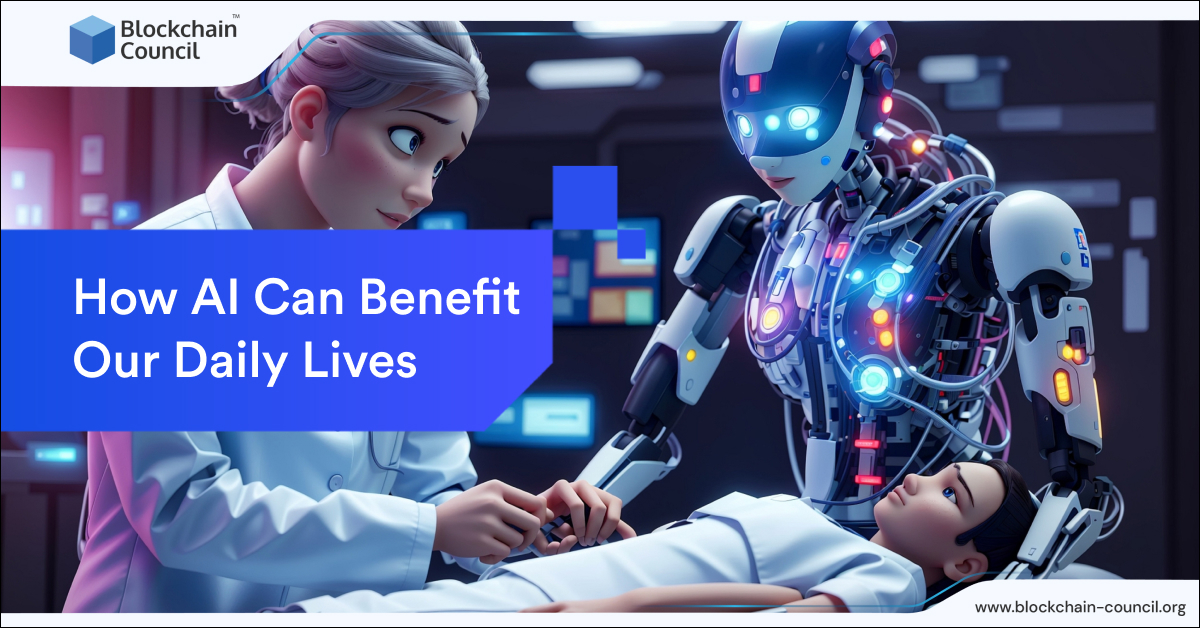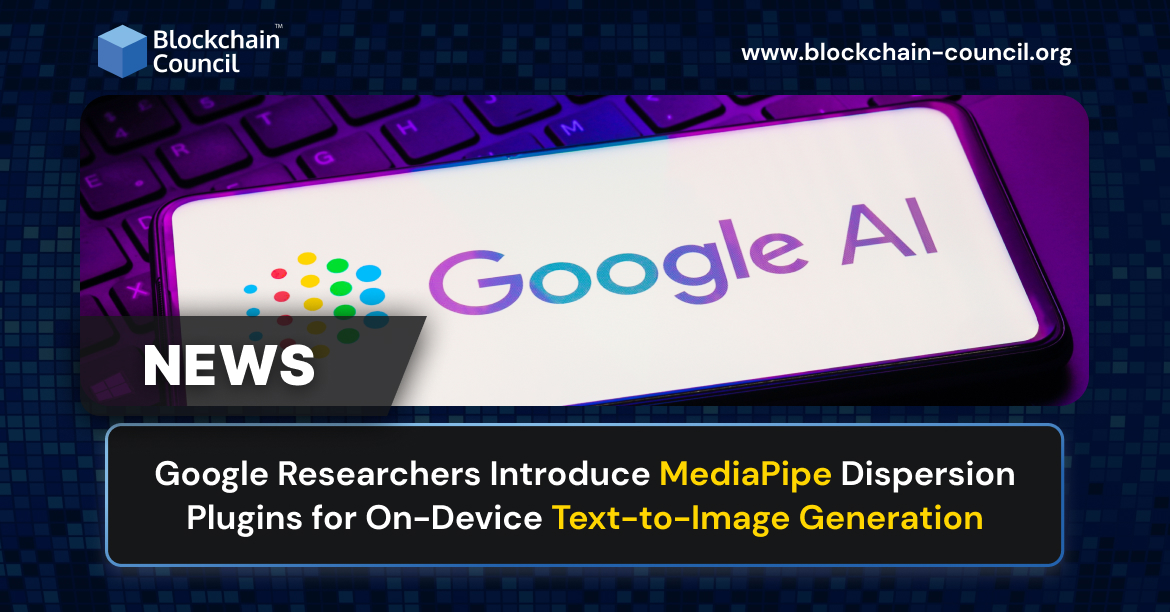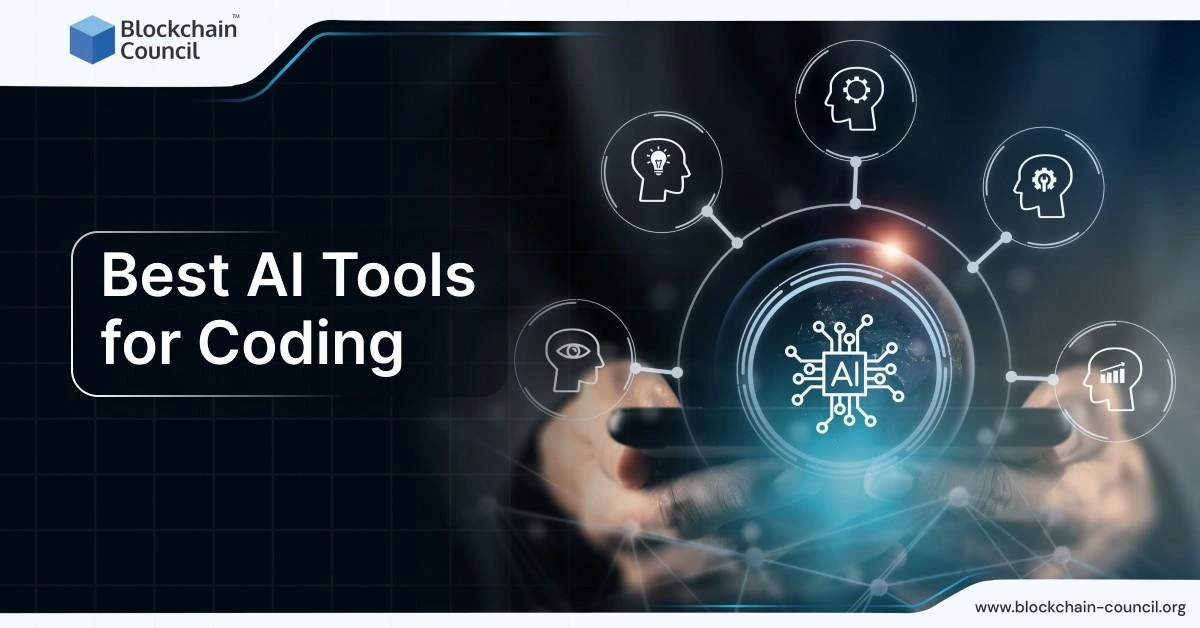
- Blockchain Council
- September 01, 2023
Summary:
- AI is a game-changer in healthcare, enabling early disease detection through precise medical image analysis.
- It also personalizes treatments based on individual factors like genetics and environment.
- In emergency response, AI predicts natural disasters and issues timely alerts, while assisting emergency services by prioritizing cases.
- It enhances road safety through autonomous vehicles and optimizes transportation routes.
- Aviation safety benefits from AI as it predicts potential aircraft failures and aids air traffic control for safer flights.
- AI plays a vital role in disaster response through robots and drones that navigate disaster areas and assess damage.
- It also uses social media data for real-time disaster information.
- Mental health support benefits from AI chatbots that offer immediate counseling, while AI-driven sentiment analysis aids in mental health research.
- In law enforcement, AI predicts and prevents crimes through data analysis, enhances video surveillance, and automates license plate recognition.
- AI contributes to environmental conservation by detecting wildlife poaching activities, mapping habitats, and predicting natural disasters. It also optimizes energy usage.
- In industrial safety, AI provides predictive maintenance to prevent equipment failures and enables real-time asset monitoring.
- It identifies unsafe behaviors and supports VR/AR simulations.
- AI-enhanced microscopes are used for early diagnosis of fatal blood diseases, achieving an accuracy rate of 95% in identifying harmful substances and bacteria.
- Robot-assisted surgery enhances precision and safety in various surgical procedures, resulting in fewer complications and faster recovery.
- Overall, AI has transformed various aspects of life, automating tasks, saving time and effort, and driving progress in multiple industries.
Introduction
Artificial Intelligence (AI) represents machine intelligence capable of performing tasks through techniques such as sentiment analysis and Natural Language Processing (NLP). AI allows machines to learn from past data, comprehend it, and apply this knowledge across various business functions. AI encompasses Machine Learning and Deep Learning, each playing distinct roles in empowering machines. In this article, we will discuss 10 times when AI proved to be a life savior!
AI in Healthcare
Early Disease Detection
Advanced AI algorithms analyze medical images, aiding in the timely detection of tumors. This heightened accuracy results in prompt treatment interventions and improved patient outcomes. AI models meticulously evaluate patient data, accurately predicting cardiovascular risks and facilitating preventive measures. AI is instrumental in identifying patterns and symptoms of infectious diseases, leading to early detection and effective public health responses.
Precision Medicine and Personalized Treatments
AI delves into patient-specific data, including genetic and environmental factors, to devise precise treatment plans. This individualized approach minimizes adverse effects and maximizes treatment efficacy. AI also forecasts individual responses to medications, enhancing prescription success rates. The integration of AI in robotic-assisted surgeries ensures heightened precision and safety during intricate procedures.
Accurate Cancer Diagnosis
PathAI offers state-of-the-art Machine Learning and AI tools, revolutionizing cancer diagnosis. This translates into reduced errors in cancer identification and the introduction of innovative approaches to personalized medical treatment, ultimately saving countless lives.
AI in Emergency Response
Predictive Analytics for Natural Disasters
AI assumes a pivotal role in the prediction and mitigation of natural calamities like hurricanes, earthquakes, and floods. Early warning systems powered by AI analyze extensive datasets to identify patterns and anticipate potential disasters. This enables timely alerts, thus saving lives and mitigating damage. AI’s prowess extends to the precise prediction of flood risks by monitoring weather conditions, water levels, and river flows.
AI-assisted Emergency Medical Services
AI algorithms automatically scrutinize emergency calls, swiftly identifying critical situations and dispatching the most suitable resources. This streamlined process leads to reduced response times and optimized allocation of medical resources. Additionally, AI aids medical professionals in prioritizing cases based on severity, thereby expediting triage.
AI in Transportation
Autonomous Vehicles Enhancing Road Safety
AI-fueled sensors and cameras detect road hazards, empowering autonomous vehicles to respond promptly. Real-time data analysis enhances traffic flow, minimizes congestion, and reduces accident risks. Ride-sharing platforms such as Uber and OLA leverage AI to enhance user experiences, improving communication and decision-making.
Route Planning
AI-enabled route planning proves invaluable to businesses, particularly in logistics and shipping. Predictive analytics factors in various road usage parameters, such as congestion levels, road restrictions, traffic patterns, and consumer preferences. This technology translates to reduced delivery costs, expedited delivery times, and enhanced asset and operations management for cargo logistics companies.
AI for Improved Aviation Safety
Machine learning algorithms scrutinize aircraft sensor data, predicting potential malfunctions and enabling timely maintenance to prevent catastrophic incidents. AI-based systems assist air traffic controllers in managing intricate airspaces, thereby minimizing collision risks and ensuring efficient routing. AI technology equips pilots with real-time data analysis, weather forecasts, and collision avoidance warnings, enhancing flight safety.
AI in Disaster Response
Robotics and AI in Search and Rescue
AI-powered drones and robots navigate disaster-stricken areas, accessing locations inaccessible to humans and identifying signs of life. Advanced algorithms process data from sensors, cameras, and microphones, providing vital information to rescue teams. AI-driven robots handle perilous situations, such as collapsed buildings or chemical spills, reducing risks to human rescuers.
AI-powered Damage Assessment and Recovery Planning
AI analyzes satellite imagery, aerial photographs, and ground-level data to gauge the extent of damage post-disaster. This information allows authorities to pinpoint critical infrastructure and areas necessitating immediate attention, streamlining the recovery process. Smart Resource Allocation factors in population density, geographical terrain, and resource availability to optimize recovery efforts.
The pivotal role played by AI during Hurricane Harvey serves as a testament to its significance in disaster response. Researchers at the University of Texas harnessed AI algorithms to analyze social media data, providing real-time insights into flooded areas, stranded individuals, and urgent needs.
Certified Prompt Engineer™
AI in Mental Health Support
AI Chatbots for Mental Health Counseling
AI-powered chatbots have emerged as indispensable tools for mental health counseling. These virtual assistants offer immediate, non-judgmental support regardless of time or location. People often find it easier to open up to these chatbots, as they provide a safe and empathetic space for individuals grappling with anxiety, depression, or other mental health challenges.
AI-driven Sentiment Analysis for Mental Health Research
AI’s capacity to process vast datasets allows researchers to analyze sentiments expressed in online platforms, social media, and other digital sources. By scrutinizing language and behavior patterns, AI algorithms can identify individuals at risk of mental health issues, enabling timely intervention. AI-powered sentiment analysis tools provide researchers with accurate and efficient means to gauge public sentiment, identify trends, and gain valuable insights for mental health research.
AI in Law Enforcement
AI-powered Crime Prediction and Prevention
Predictive Policing leverages data analysis to anticipate potential criminal activities, enabling proactive law enforcement measures. AI systems adeptly recognize patterns in criminal behavior, aiding in the swift identification and apprehension of serial offenders. AI-generated real-time alerts notify law enforcement agencies about suspicious activities or potential threats. In the realm of Cybercrime Detection, AI identifies anomalies in network traffic, facilitating early detection and prevention of cybercrimes and safeguarding individuals and organizations.
AI-enabled Video Surveillance for Public Safety
AI-powered video surveillance systems analyze live feeds, detecting suspicious activities, unattended objects, or abnormal behavior. This capability enables immediate responses and diminishes the likelihood of criminal incidents. Facial recognition technology empowers law enforcement agencies to identify and track individuals of interest, enhancing their ability to locate suspects and prevent potential threats.
Dubai Police, for instance, introduced “Amna,” an AI-powered virtual assistant, to assist officers and boost operational efficiency. Amna utilizes natural language processing and machine learning algorithms to comprehend and respond to inquiries from police personnel. It provides vital information on laws, procedures, and departmental knowledge, enabling officers to access critical data swiftly and improve their decision-making and operational effectiveness.
Automated License Plate Recognition (ALPR) Systems
Equipped with AI technology, ALPR systems are employed by law enforcement agencies worldwide to identify and track vehicles of interest. Cameras installed on police vehicles or at fixed locations capture license plate images, which are subsequently processed by AI algorithms to extract and analyze plate numbers. This facilitates the identification of stolen vehicles, vehicles involved in crimes, or individuals with outstanding warrants.
AI in Environmental Conservation
AI for Wildlife Conservation and Protection
AI-powered systems featuring image recognition and video analysis algorithms swiftly identify and report potential poaching activities in protected wildlife areas. Through advanced tracking techniques and AI algorithms, wildlife researchers gather crucial data on movement patterns, population dynamics, and health conditions of endangered species. AI contributes to mapping and monitoring habitats, allowing conservationists to identify areas at risk and implement effective measures for habitat protection and restoration.
AI-based Solutions for Climate Change Mitigation
Predicting Natural Disasters entails the analysis of vast data, including weather patterns, seismic activities, and historical records, to provide accurate predictions and early warnings for events like hurricanes, floods, and earthquakes. Energy Optimization and Efficiency harness AI to optimize energy usage, identify energy-saving opportunities, and enhance the efficiency of power grids, buildings, and industrial processes, ultimately reducing greenhouse gas emissions. AI-powered tools, including remote sensing and predictive analytics, assist farmers in optimizing irrigation, fertilizer use, and crop management techniques, resulting in higher yields, reduced water consumption, and minimized environmental impact.
Certified Artificial Intelligence (AI) Developer™
AI in Industrial Safety
Predictive Maintenance and Equipment Failure Prevention
AI-based predictive maintenance systems have revolutionized how industries monitor their equipment. By continuously analyzing sensor data, AI algorithms detect anomalies and predict equipment failures before they occur. This proactive approach helps prevent unexpected breakdowns, reduce downtime, and ensure worker safety. Sensors provide real-time data on equipment performance, including temperature, vibration, and pressure.
AI-Based Asset Monitoring
AI enables real-time monitoring of assets in industrial settings, ensuring optimal performance and safety. By combining IoT sensors, AI algorithms, and machine learning techniques, industries can:
- Identify deviations from normal operating conditions that could pose safety risks.
- Schedule maintenance activities based on data-driven insights, reducing the chances of accidents caused by faulty equipment.
Computer vision systems powered by AI can detect unsafe behaviors, such as improper use of machinery or failure to wear safety gear. Virtual reality (VR) and augmented reality (AR) simulations enable workers to practice hazardous tasks in a safe and controlled environment, improving their skills and reducing on-site accidents.
Accident Prevention at Tesla
Tesla, a prominent electric car manufacturer, employs AI technology to enhance industrial safety in its factories. Computer vision systems monitor the production line, identifying potential safety hazards in real time. The AI algorithms detect unsafe conditions, such as workers not wearing proper protective gear or operating machinery incorrectly. This enables immediate intervention to prevent accidents and maintain a safe working environment.
Early Diagnosis of Fatal Blood Diseases
Artificial Intelligence has proven immensely helpful in diagnosing potentially fatal blood-related diseases at an early stage. With the aid of AI-enhanced microscopes, doctors can swiftly scan blood samples for harmful substances and bacteria, such as Staphylococcus and E. coli, at a significantly faster rate than manual examination.
Scientists utilized over 25,000 blood sample images to train machines in identifying harmful bacteria. AI allowed the machines to learn to detect these bacteria in new samples with an accuracy rate of 95 percent, leading to a substantial reduction in fatalities.
Robot-assisted Surgery
Robot-assisted surgery has gained significant popularity in recent times. Several hospitals have implemented robotics to assist in tasks demanding precision, control, and flexibility, including open-heart surgery, surpassing human capabilities.
Robots equipped with mechanical arms, cameras, and essential surgical instruments enhance the knowledge, skills, and experience of surgeons, introducing a new era of surgery. Surgeons can operate from a computer console, controlling the robot’s mechanical arms, while the robot provides a magnified, three-dimensional view of the surgical site, which is impossible to achieve with the naked eye. Surgeries assisted by AI-implemented robots result in fewer complications, reduced patient pain, and faster recovery rates.
Conclusion
Artificial Intelligence has profoundly impacted various aspects of human life, resulting in time savings, reduced human effort, and increased business efficiency. As highlighted above, AI has brought about automation that benefits individuals and businesses alike, propelling industries forward. The transformative power of AI continues to shape our world, promising even more remarkable advancements in the years to come.
- AI aids early disease detection through precise medical image analysis.
- It enables precision medicine by tailoring treatments based on genetic and environmental factors.
- PathAI improves cancer diagnosis accuracy.
- AI predicts natural disasters and issues timely alerts.
- It uses robots and drones for search and rescue operations.
- AI assesses damage and streamlines recovery efforts.
- Social media data is harnessed for real-time disaster information.
- AI optimizes routes for efficient supply networks.
- It improves road safety through autonomous vehicles.
- Ride-sharing platforms like Uber and OLA use AI to enhance user experiences.
- AI predicts and prevents crimes through data analysis.
- It enhances video surveillance and automates license plate recognition.
- AI-powered systems generate real-time alerts for law enforcement agencies.
- AI detects and reports wildlife poaching activities.
- It aids in habitat mapping and monitoring.
- AI predicts natural disasters and optimizes energy usage, reducing environmental impact.





































































 Guides
Guides News
News Blockchain
Blockchain Cryptocurrency
& Digital Assets
Cryptocurrency
& Digital Assets Web3
Web3 Metaverse & NFTs
Metaverse & NFTs
